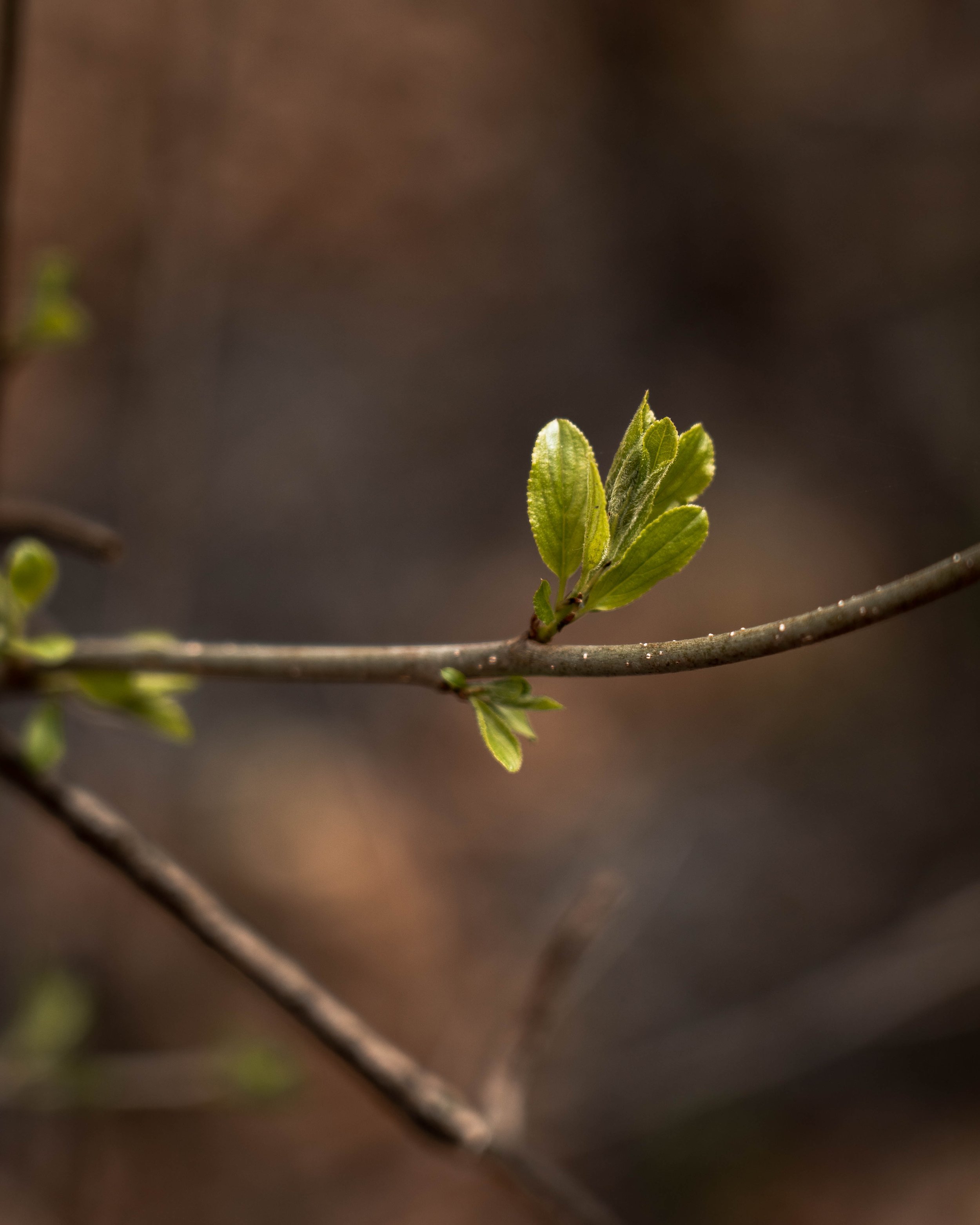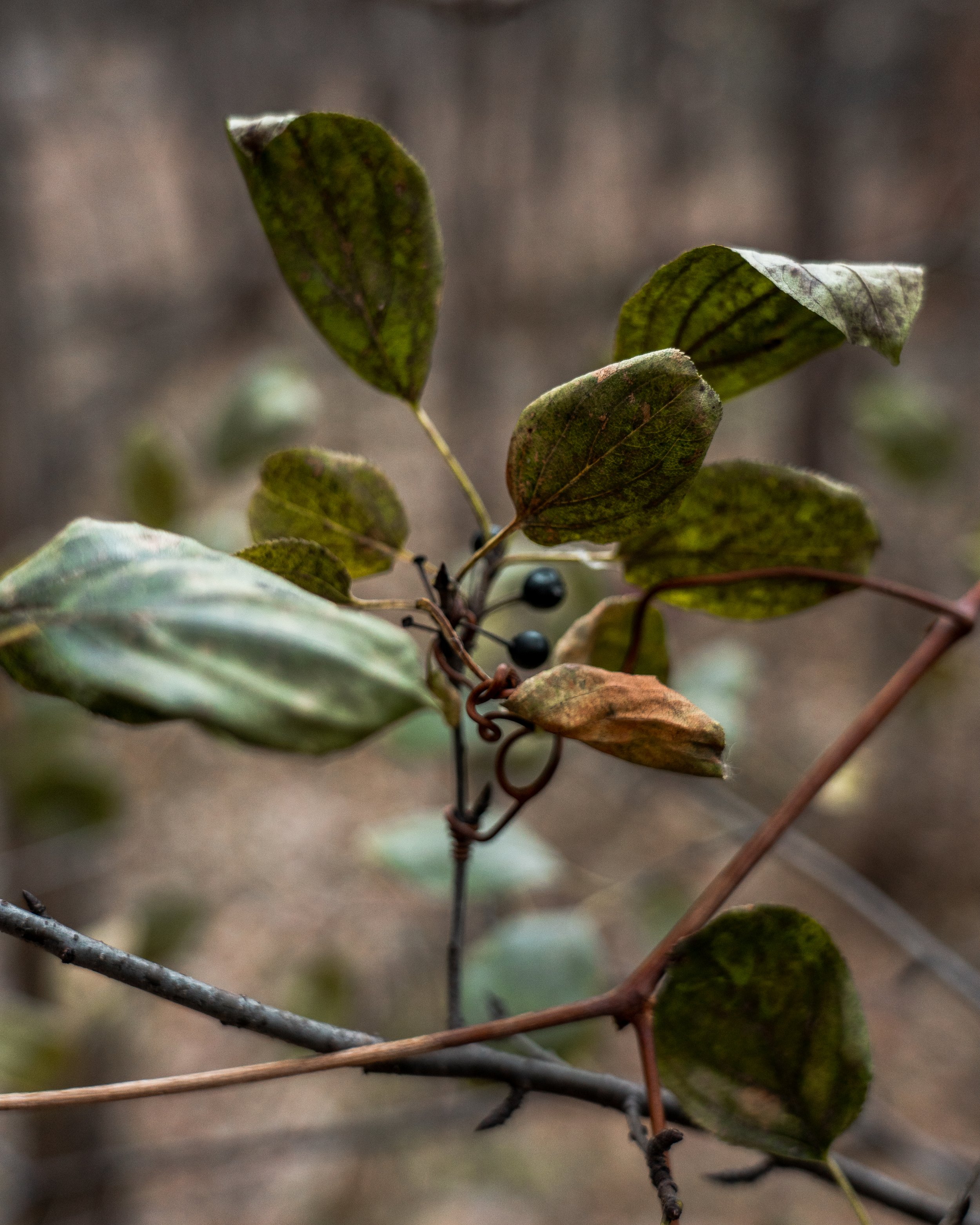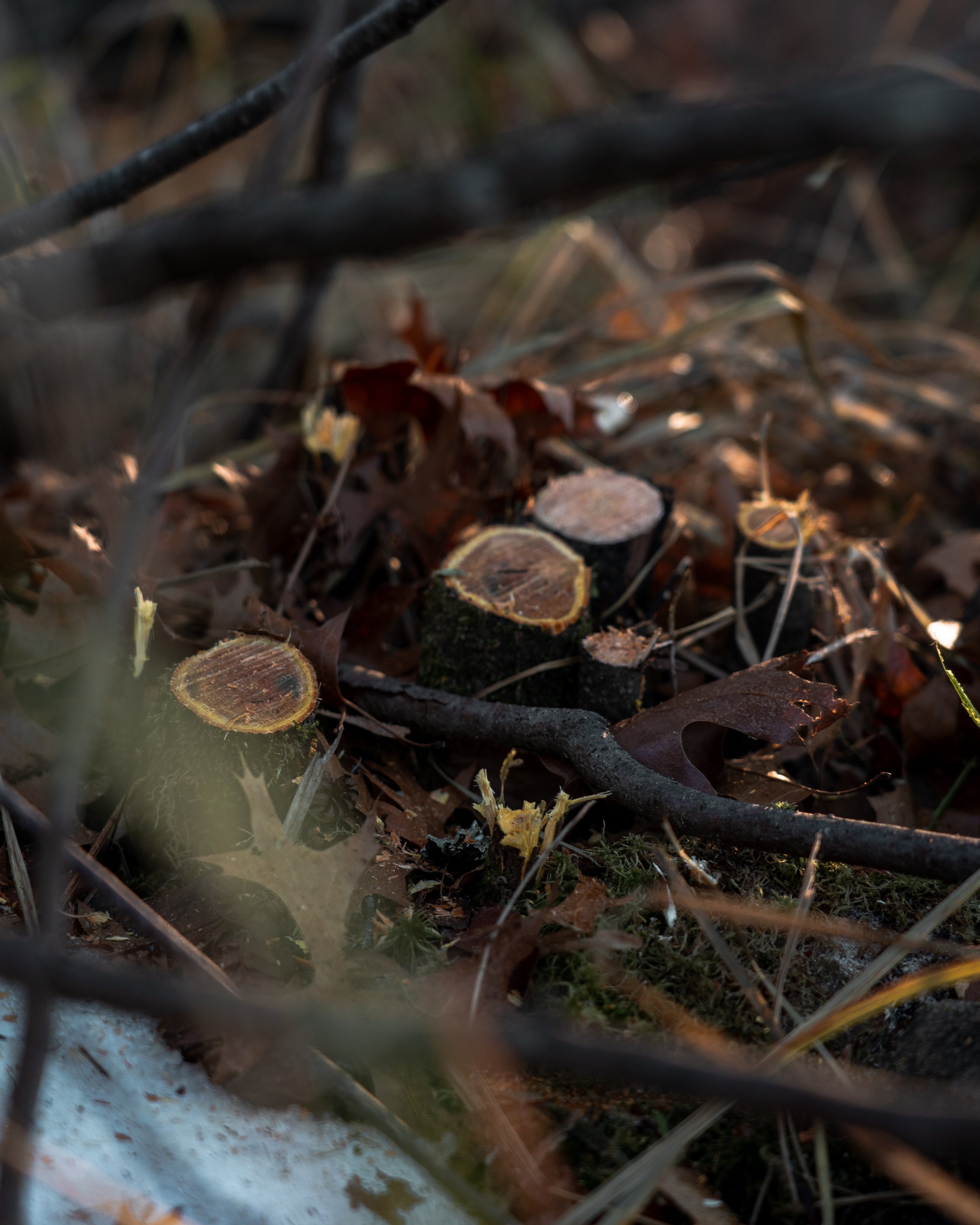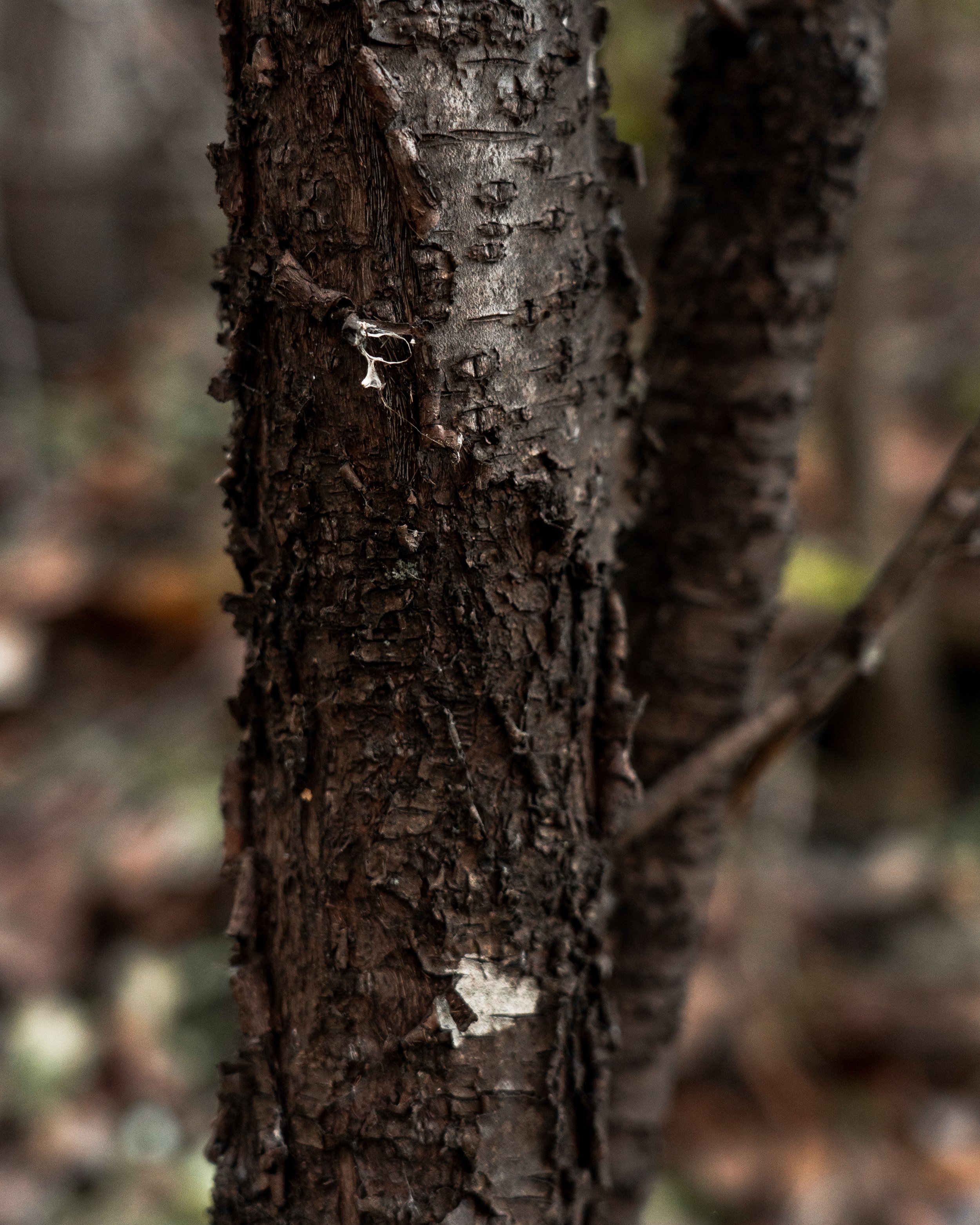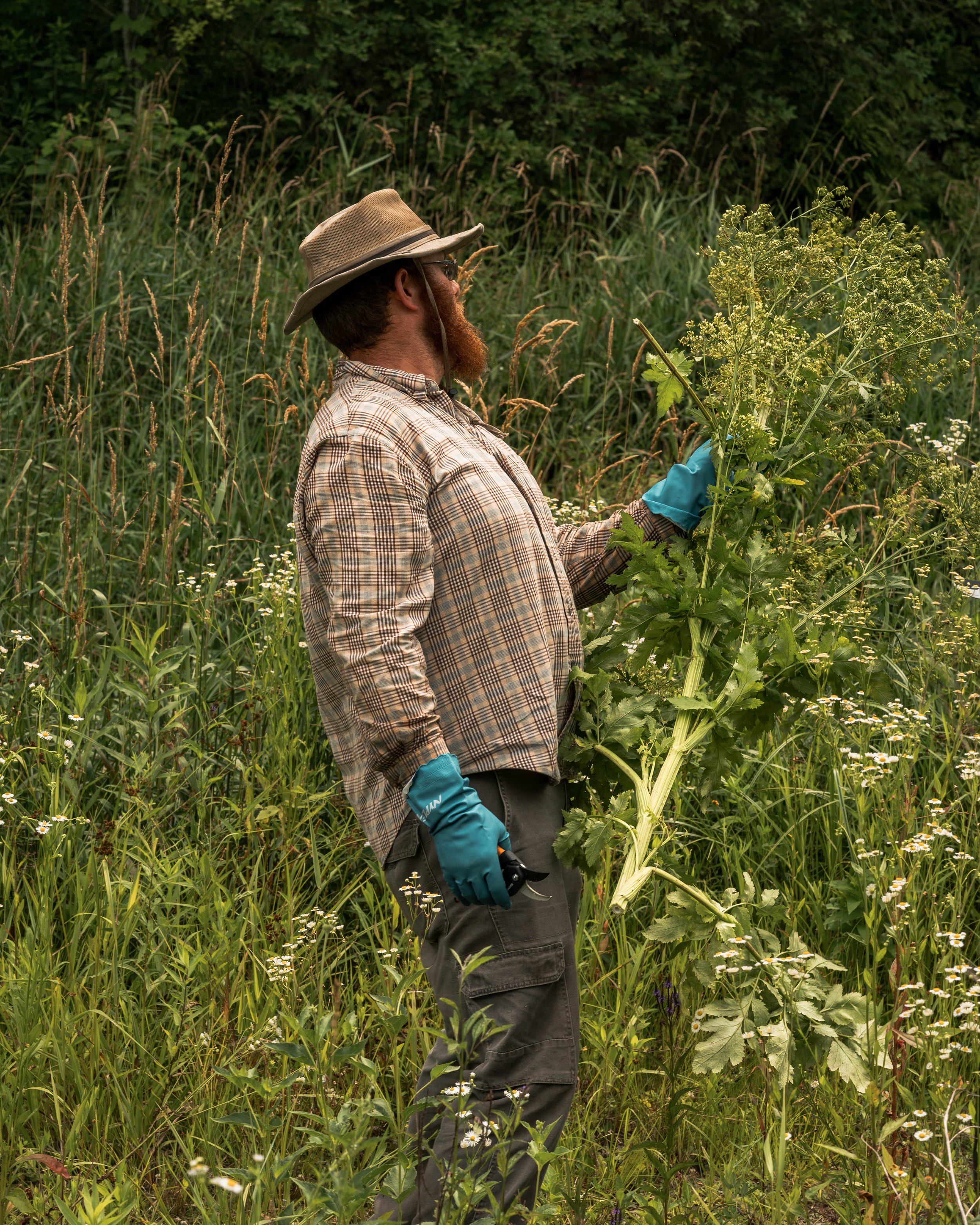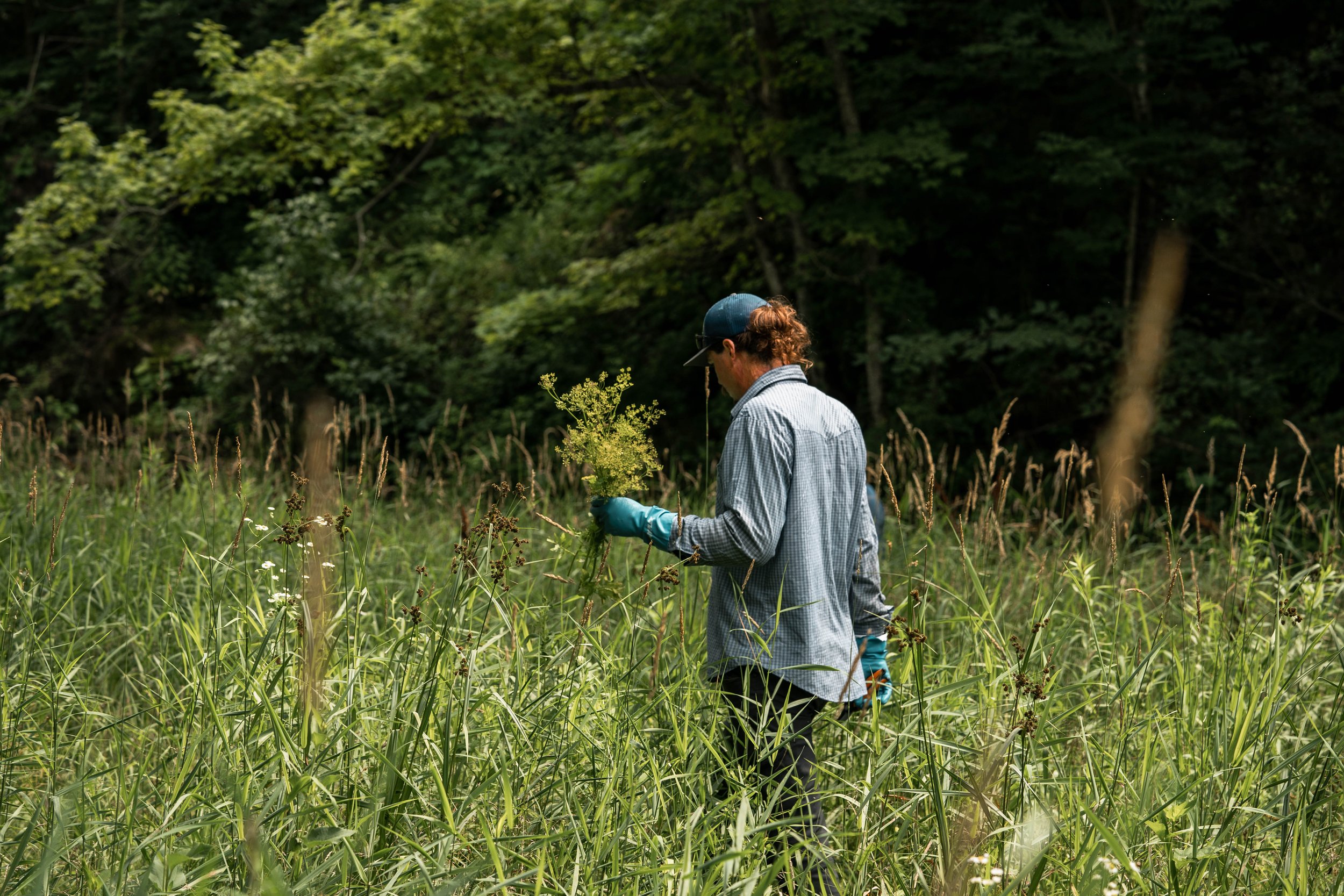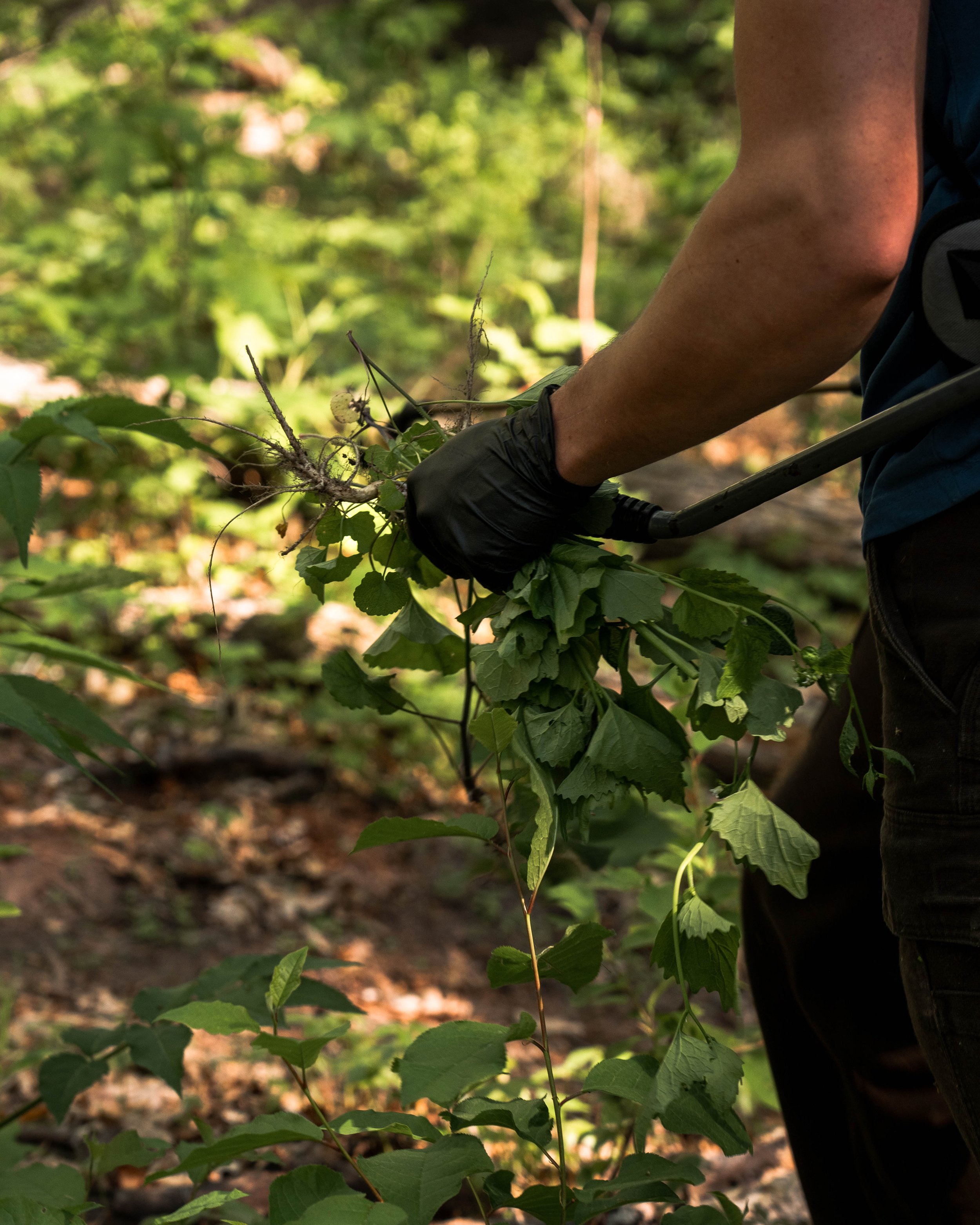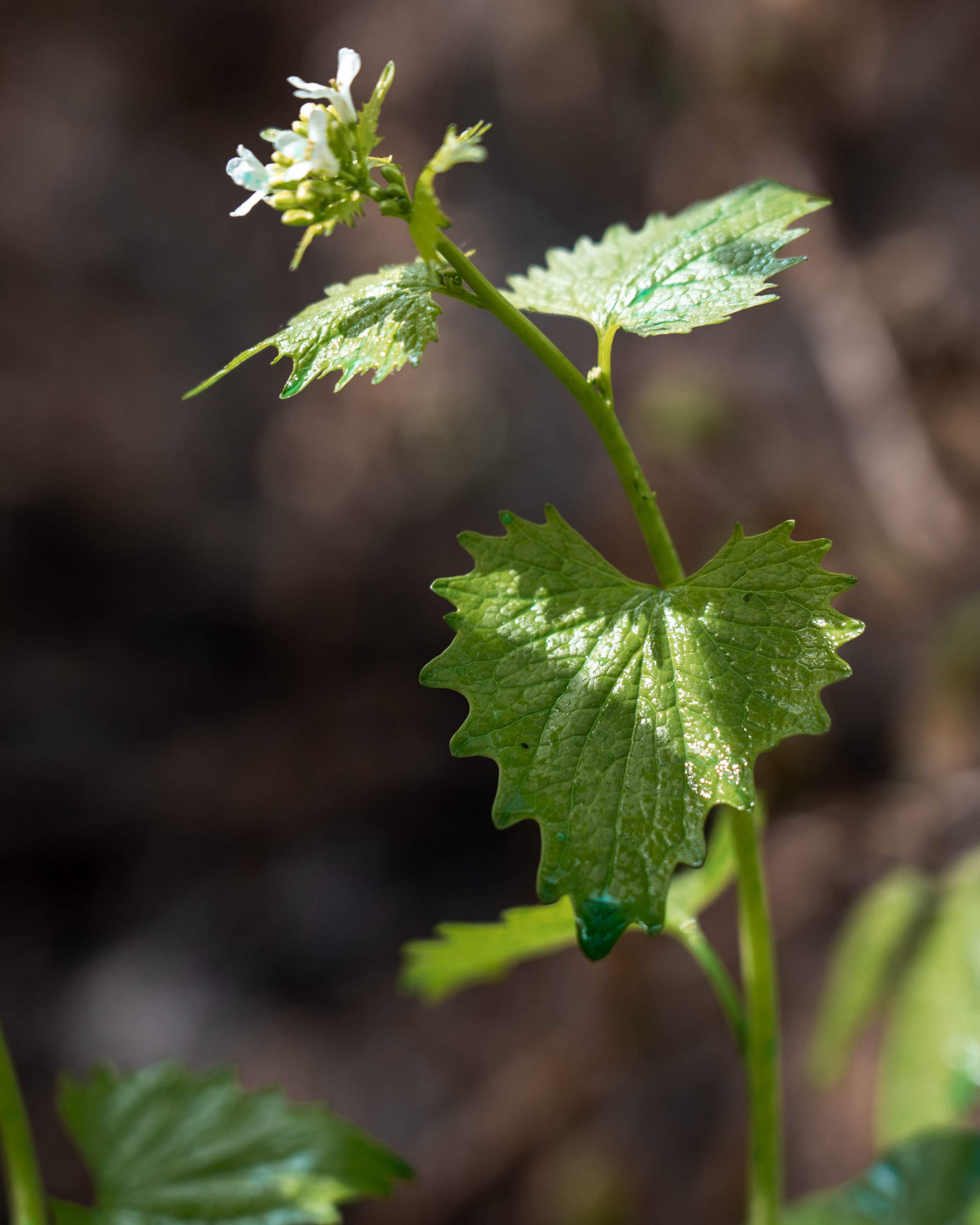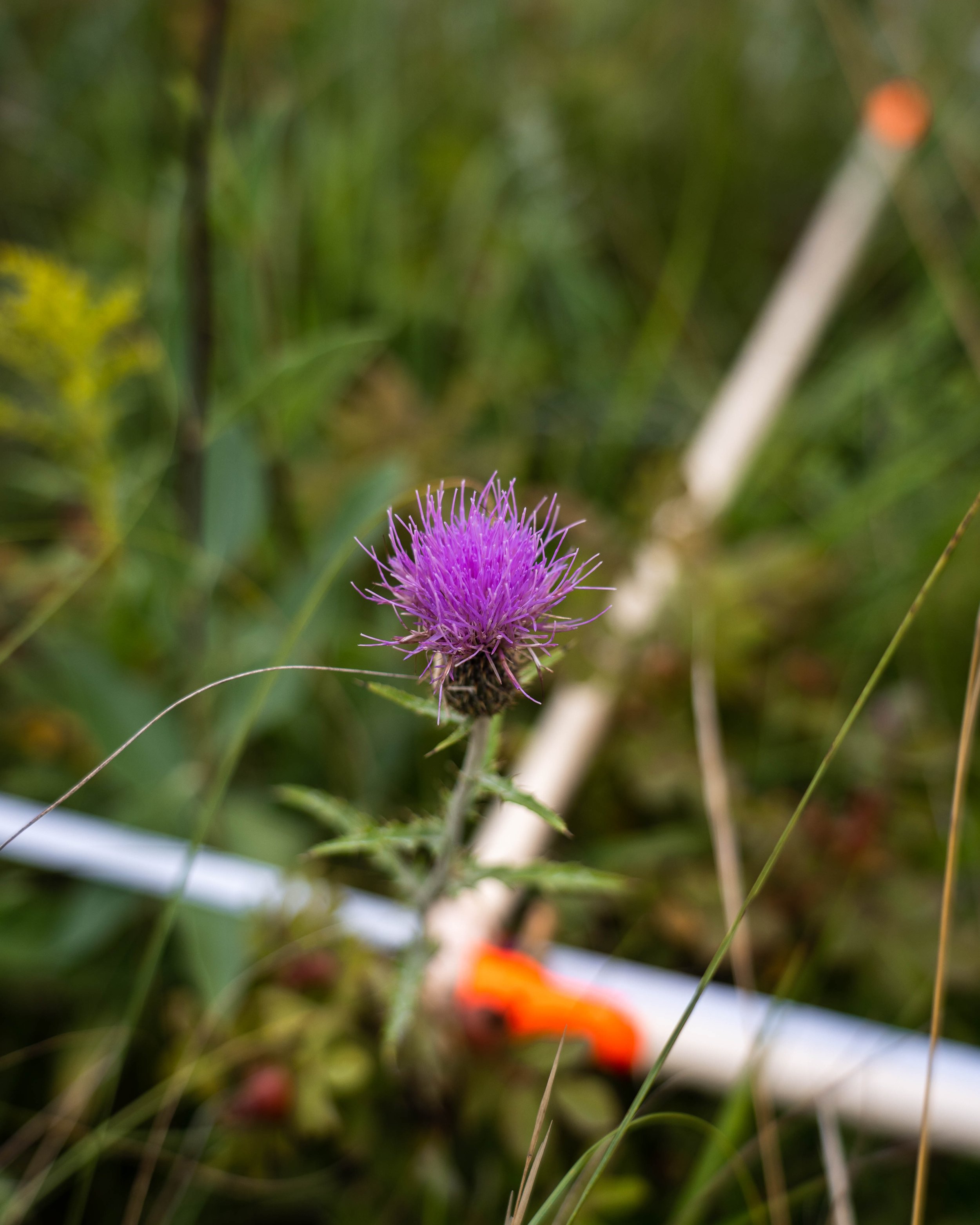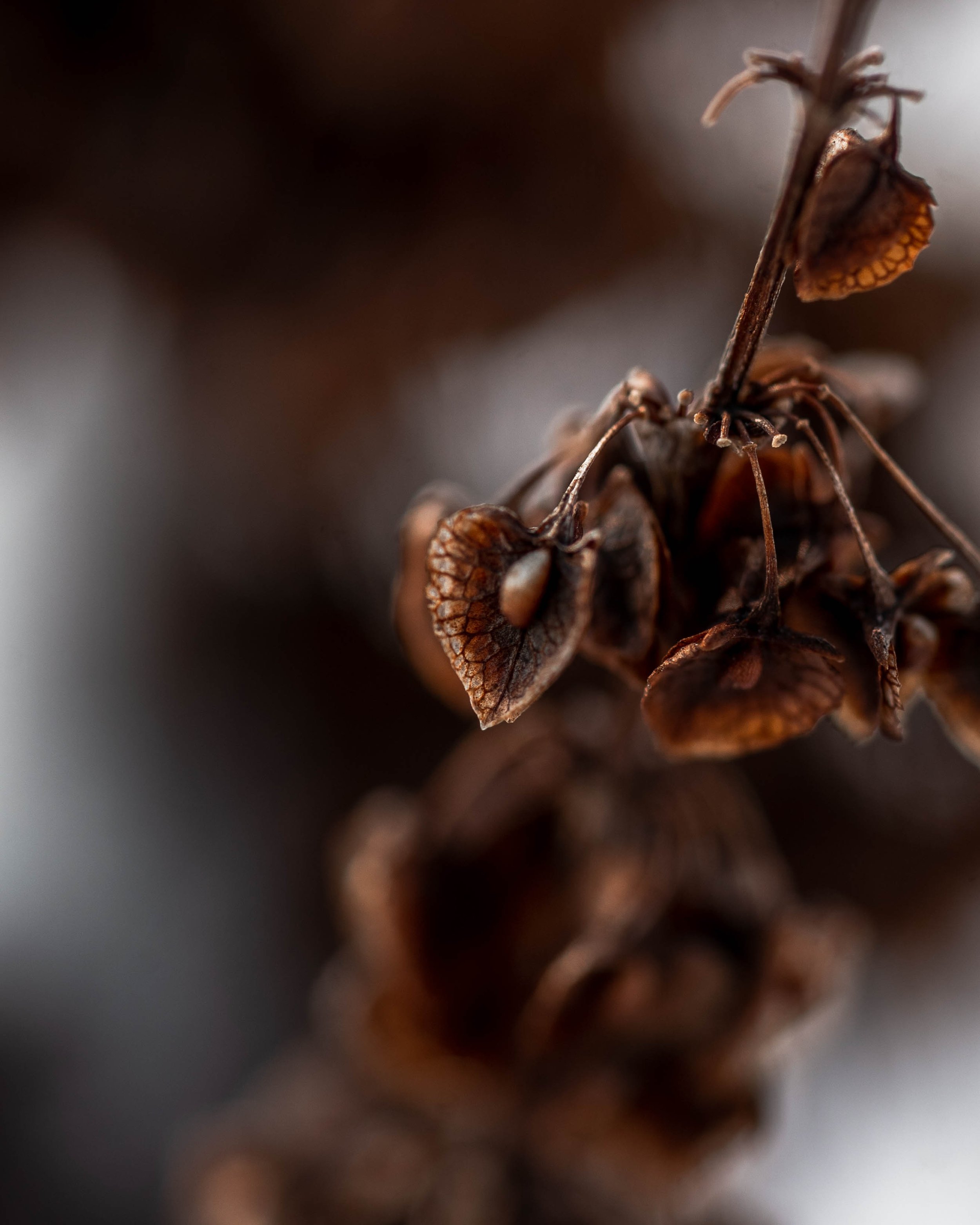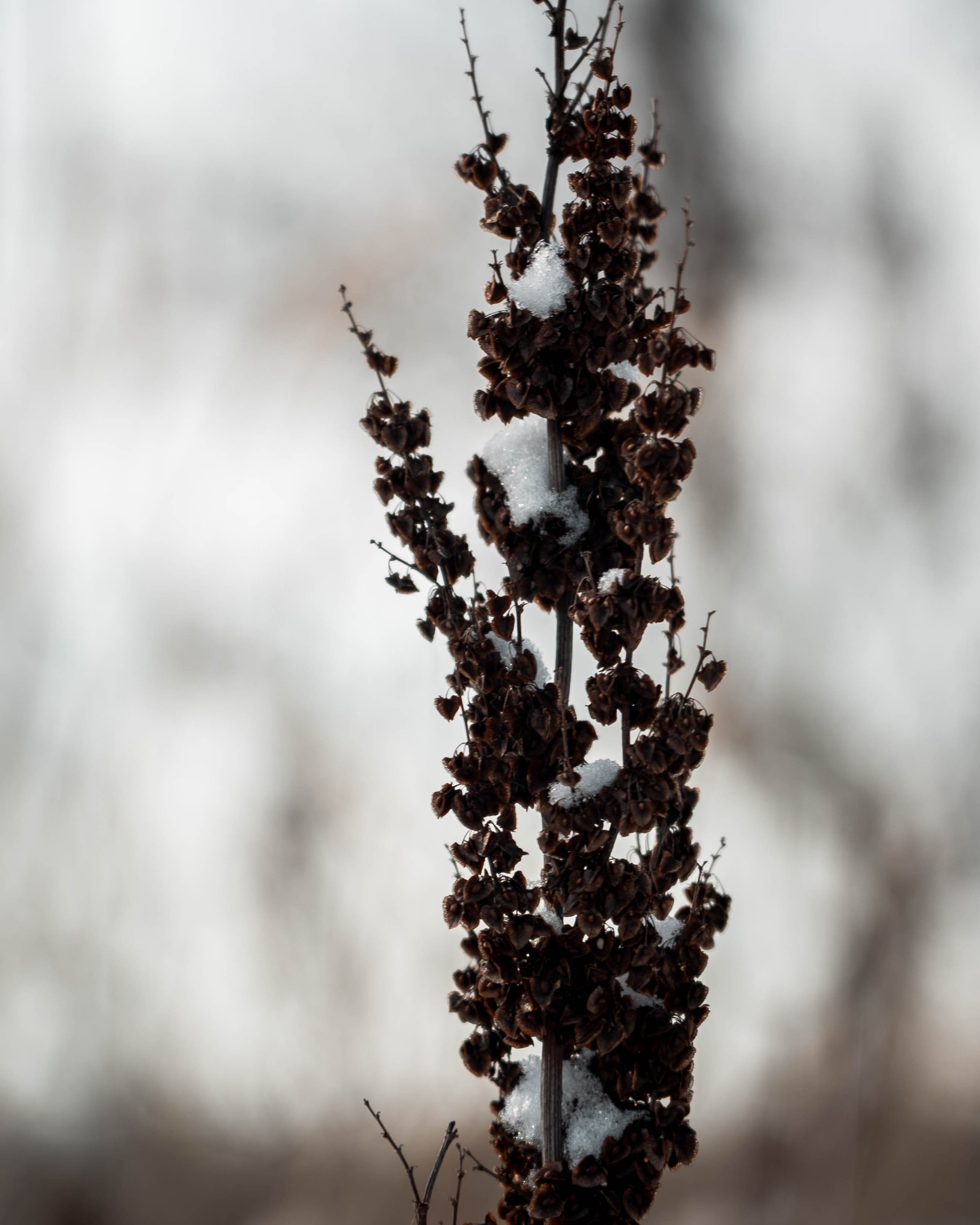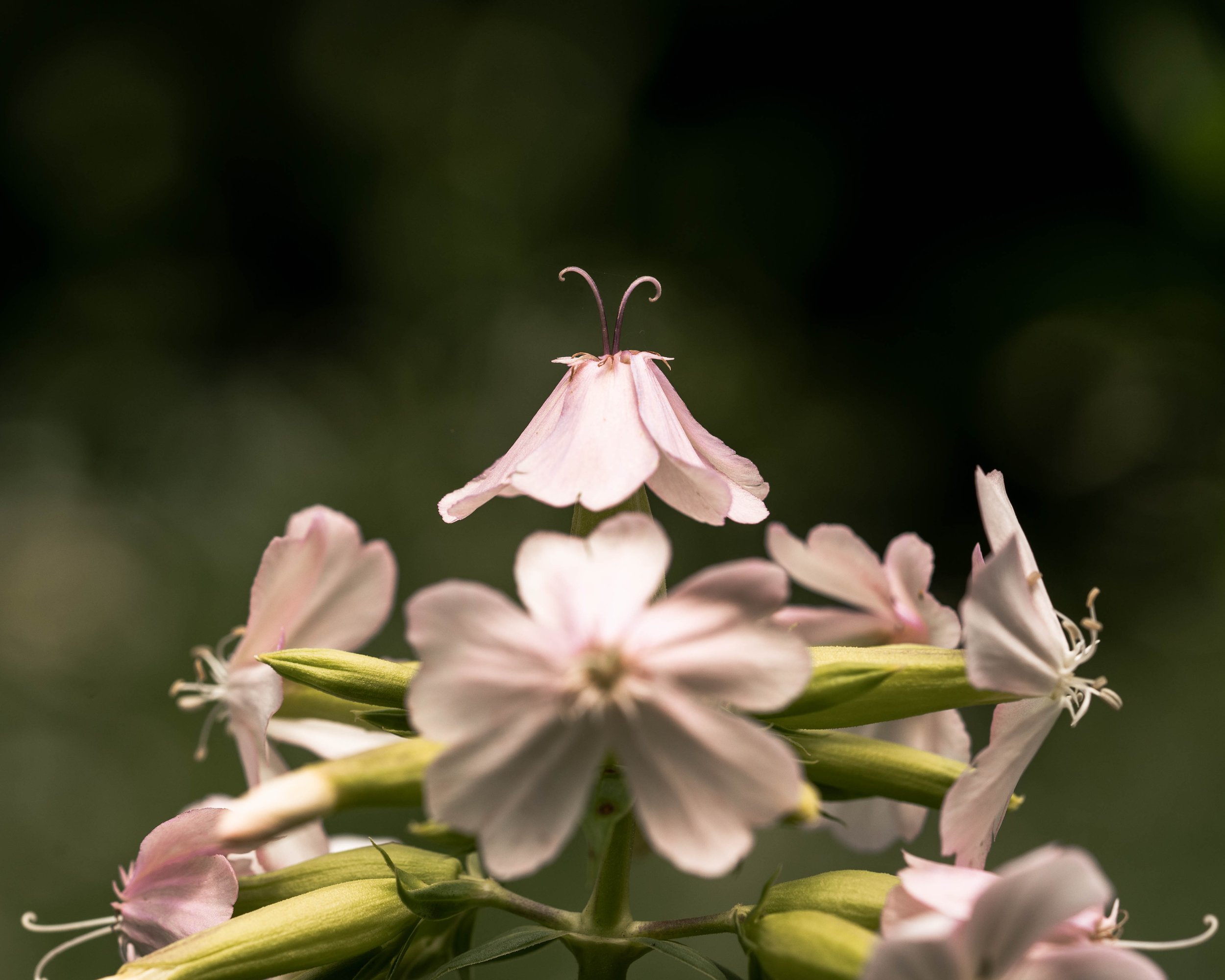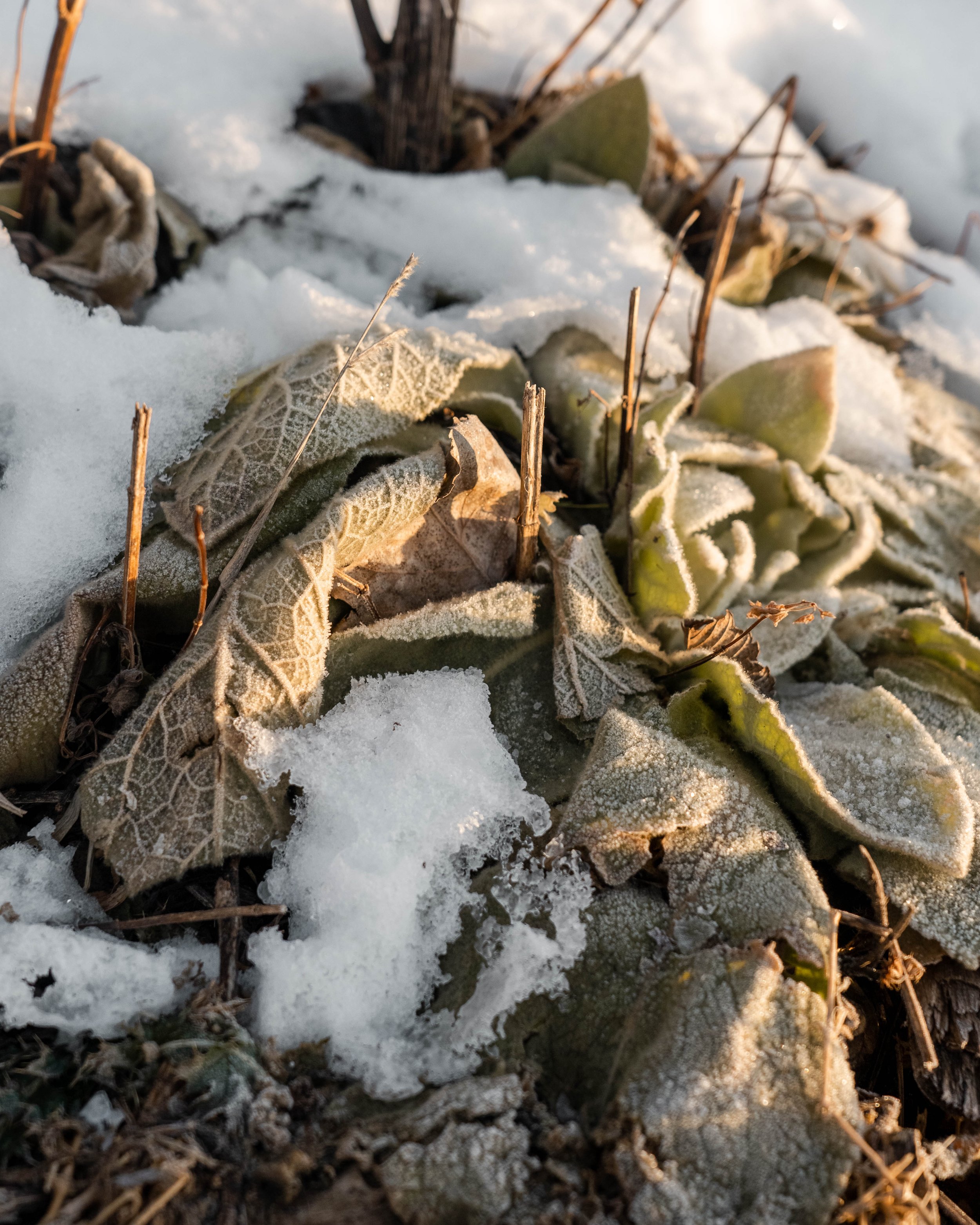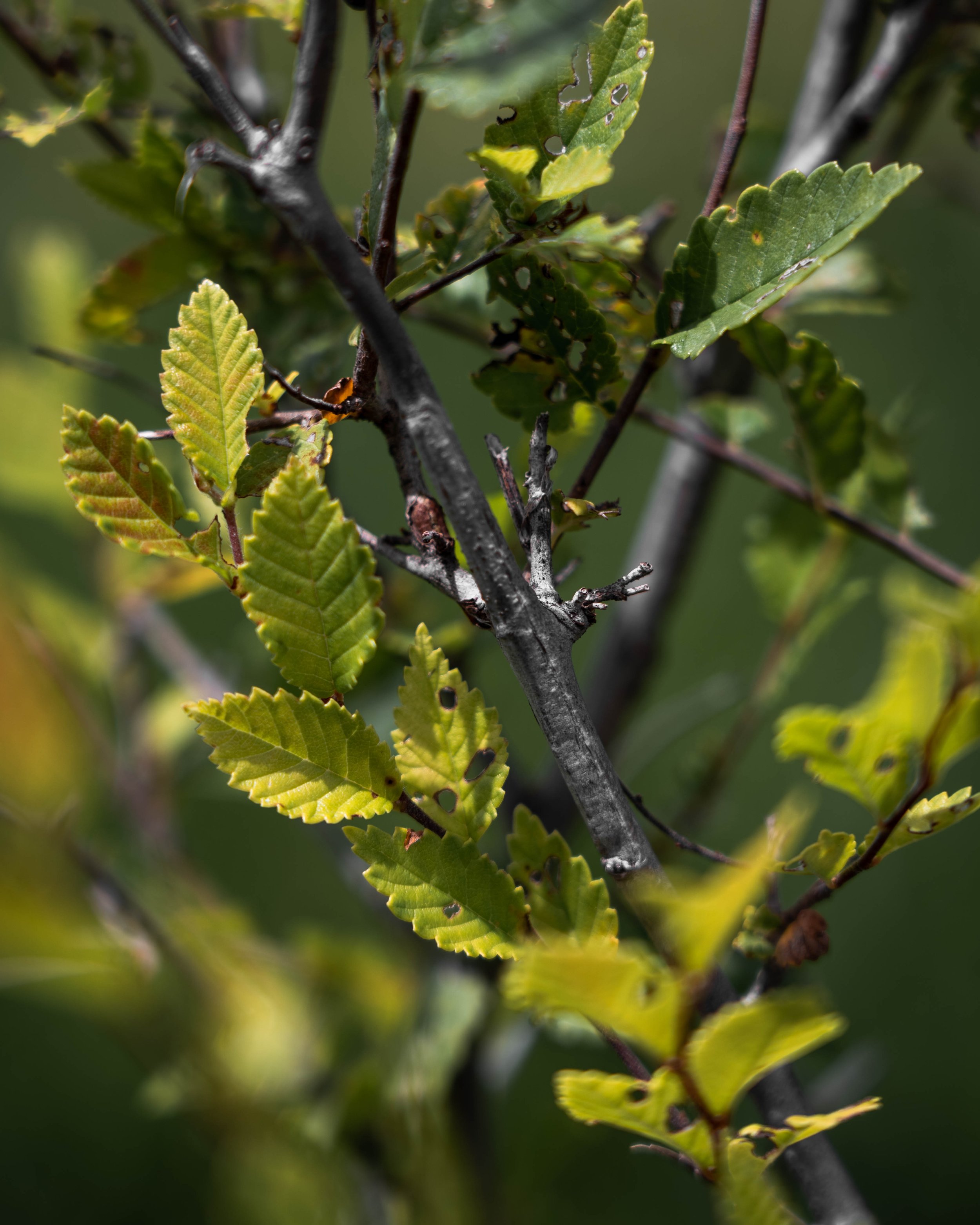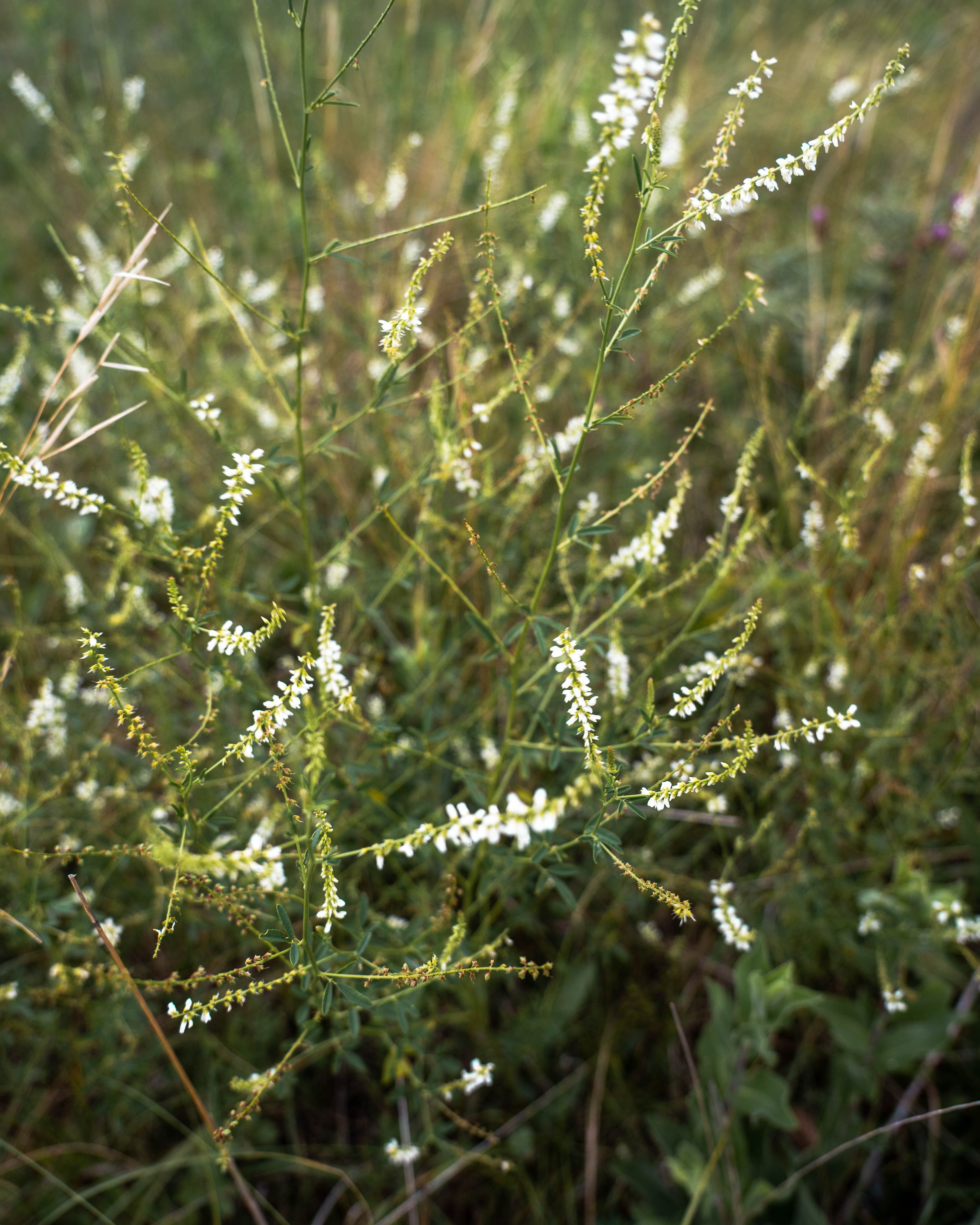Invasive Species Part II: A Snapshot of Minnesota Invasive Species
There are a number of invasive species that persist in Minnesota. From trees to wildflowers to vines to insects to mammals to fish, and more; invasive species come in many forms. There are too many individual species to cover in one blog post, so we are only going to highlight the major ones we deal with during our restoration projects. If you want more information on all the recognized invasives species in Minnesota, and the invasive species watchlist, check out the MN DNR website resources.
Buckthorn
First on the list is a favorite here at NRP (not really, we just deal with it a lot). Common buckthorn (Rhamnus cathartica) and Glossy buckthorn (Frangula alnus) are two of the most common woody invasive species in Minnesota. Buckthorn is particularly persistent in the southern and central parts of the state, though it’s beginning to creep its way further north. Buckthorn grows just about anywhere, though it is of particular problem in wooded areas. It grows quickly and outcompetes other native plants for resources. Due to its fast growth, it can quickly overtake native tree seedlings and shade them out. It will form dense colonies that completely obscure areas and block light penetration, preventing native understory growth. This can lead to degraded wildlife habitat and erosion problems. There are no natural controls for buckthorn, and its adaptability to almost any habitat makes it difficult to control and manage. Initially introduced as an ornamental hedge plant, buckthorn is still present in landscaping as a privacy hedge, despite its damage to natural resources.
What It Looks Like: Buckthorn is a woody-stemmed species with broad, elliptical, dark glossy green leaves. It has dark berries, and often keeps its leaves and berries late into the fall. New branches have small thorns. The bark looks similar to native plum and cherry, but if you nick it, the inner wood just past the bark has a distinct orange color.
Regulations: It is illegal to import, sell, or transport buckthorn in Minnesota.
What You Can Do: Check your gear and shoes before and after hiking or playing outside, and remove any twigs, sticks, or berries. Check your property for buckthorn and have it removed if you find it. If you have buckthorn as a privacy shrub, replace it with a native shrub alternative.
Wild Parsnip
This one is a common target of mid-summer restoration projects. Wild parsnip (Pastinaca sativa) is an herbaceous, yellow flowering plant that typically grows along roadways, in pastures and prairies, and around disturbed areas. This plant invades an area slowly, you may only find a few individuals at a time. Once the population is built up though, it quickly spreads and forms large colonies. Wild parsnip is particularly difficult to deal with because it is hazardous to humans. Sap from this plant chemically reacts to sunlight, creating chemical burns on people’s skin who have been exposed to it. Due to this, we cannot easily mow or cut large colonies of wild parsnip. Our crews have to spray it when it’s small and actively growing, or the root system has to be severed and the flowering stem manually dug out of the ground.
What It Looks Like: Wild parsnip is very easy to confuse with native flowering plants like goldenrod and golden alexander. It has a tall central stalk with a head full of clusters of little yellow flowers. The leaves are comprised of course-toothed leaflets, and the root includes a long thick taproot that looks similar to cultivated parsnip.
Regulations: It is illegal to import, sell, or transport wild parsnip in Minnesota.
What You Can Do: Check your gear and shoes before and after hiking or playing outside, and remove any flowers, seeds, or plant bits. Check your property and rights of ways for wild parsnip and have it removed if you find it. If you encounter wild parsnip, avoid breaking the stem and getting the sap on your skin.
Garlic Mustard
This food sounding plant is another common herbaceous, invasive plant that we treat in many types of habitats. Garlic mustard (Alliaria petiolate) was introduced to the United States way back in the 1800s. Even though it’s been around a while, it’s still one of the primary targeted invasive species for land management. Garlic mustard spreads through tiny seeds that can be easily transported in mud, so it commonly grows along roads, trails, and high trafficked natural areas. It grows in thick colonies that shade out other native species, and has a unique competitive advantage. Garlic mustard produces chemicals that actually inhibit the growth of surrounding vegetation, effectively limiting natural forest regeneration. Thankfully, garlic mustard is fairly easy to pull out by hand, though it can continue to go to seed after being uprooted, so all seeding parts should be bagged or tarped until it decays or can be disposed of properly.
What It Looks Like: Garlic mustard has a unique appearance that is easy to recognize once you know what to look for. First year plants grow in low to the ground circular rosettes and can be harder to identify. Second year plants have tall narrow stems that shoot up and produce small white flowers. Leaves are spade or kidney shaped and are arranged alternatively around the stem. If you’re unsure it’s garlic mustard, crush some of the leaves and stem—they will smell like garlic.
Regulations: It is illegal to import, sell, or transport garlic mustard in Minnesota.
What You Can Do: Check your gear and shoes before and after hiking or playing outside, and remove any flowers, seeds, or mud. Remember, just because you can’t see seeds in mud doesn’t mean they aren’t there. Check your property for garlic mustard and have it removed if you find it. Check your city to see if they have garlic mustard pulling volunteer options—many cities do as a way of managing this plant within city parks and trails.
Reed Canary Grass
It’s hard to recreate in, live in, or even drive through Minnesota without seeing reed canary grass (Phalaris arundinacea). It is a common invasive species in wet areas, and often grows in wetlands, ditches, drainage canals, shorelines, stormwater ponds, and along roadways. Basically, anywhere that is partially to fully saturated is growing grounds for reed canary. Like many invasive species, reed canary forms dense mono-culture (one species) stands that crowd out all other plant life. When this grass dies off, it deposits thick layers of thatch that continue to suppress native plants and limit wildlife habitat. Since it is common in wet areas, it can be difficult to remove. Once removed, keeping reed canary from re-establishing long enough for native plants to regrow is equally as challenging.
What It Looks Like: Reed canary grass is hard to identify because most grasses are similar in appearance. Its more defining characteristics include a transparent membrane where the leaf blade attaches to the stem, and hairless, erect stems. The grass blades taper from base to tip. Reed canary is one of the first grasses to sprout in the spring, so look for it early.
Regulations: Not regulated
What You Can Do: Reed canary is very difficult to remove and manage, so the best strategy is preventing the spread of it. Clean off gear and shoes, in particular any water gear such as boats and canoes before and after recreating and transporting equipment between different areas.
Oriental Bittersweet
This species is one of the few vines considered invasive in Minnesota. Though very similar to the American bittersweet in appearance, Oriental bittersweet (Celastrus orbiculatus) has the unfortunate habit of growing so thick, so fast, and so tightly around trees that it strangles them to death. Oriental bittersweet vines are woody and grow up the sides of other trees for support. As the plant matures, however, the vines can grow to the same thickness of small trees, wrapping so tightly around their support trees that they actually cut into the bark, stunt growth, and eventually kill the tree. Additionally, the vine can wrap and weave into the canopy, shading out other species, inhibiting canopy growth of other trees, and reducing productivity. Plus, the weight of this vine can sometimes cause tree tops to break off completely. Oriental bittersweet is a relatively new species in Minnesota, and is largely contained to the south and central parts of the state. Its current distribution is small, but growing. Preventing the further spread and seed production of this species is key to keep it from invading more of the state.
What It Looks Like: Oriental bittersweet is a woody-stemmed deciduous vine. Its vines grow in windy, circular patterns around other supports. The leaves are alternate and vary from oblong to round in shape. Its most distinctive feature is its fruits, which are bright red with yellow capsules when mature. Fruits are distributed across the entire stem. It is easily confused with American bittersweet which is a beneficial native vine.
Regulations: This species is included on Minnesota’s Eradicate List, meaning that wherever the plant is found, the above and below ground parts of the plant must be destroyed. It is illegal to propagate, sell, or transport oriental bittersweet in Minnesota.
What You Can Do: Oriental bittersweet is often spread through the ornamental garden trade, incorrectly labeled as American bittersweet. Its fruiting stems are also sometimes used in flower arrangements. Take care when ordering bittersweet plants or flower arrangements; check that you are not getting oriental bittersweet. Never plant oriental bittersweet in a home garden (or anywhere). As always, check your gear and shoes before and after hiking or playing outside, and remove any plant bits, seeds, fruits, or mud.
Prairie Problems
We treat a myriad of invasive species for prairie establishment and management. On any given day, our crews treating prairies might encounter upwards of 10 different invasive species. It is too many to list full profiles here. Instead, here is a fast list of species we manage in prairies and open woodlands. Check out the MN DNR website linked above for more information on all of these plants.
Queen Anne’s lace (Daucus carota): This is a white flowering plant that looks very similar to carrot plants. It is often introduced through planting in gardens because its flowers are aesthetically appealing. This species threatens recovering grasslands because it grows quickly, outcompeting natives.
Crown Vetch, Cow Vetch, and Hairy Vetch (Vicia): These three vetch species have often been intentionally used for erosion control along roadsides, and planted for foraging. Crown vetch is particularly problematic in prairies and rangeland because it spreads quickly, outcompeting other plants. It also changes nitrogen levels in soils, hurting other plant growth, and contains chemicals hazardous to grazing animals. Cow vetch and hairy vetch are problematic for new, developing prairies.
Canada Thistle (Cirsium arvense): Recognized as a problem weed almost everywhere, Canada thistle is one of the most problematic non-native thistles. It grows in many areas, quickly forming monocultures and crowding out other plants.
Butter and Eggs/Common Toadflax (Linaria vulgaris): This is a shorter growing plant with clusters of bright yellow flowers growing around the tip of the stem. Once established, this species grows quickly through horizontal spread, easily outcompeting other plants. It is problematic for developing prairies.
Birdsfoot Trefoil (Lotus corniculatus): Another non-native introduced for foraging and erosion control, birdsfoot trefoil is a yellow flowering plants with a sprawling, branching growth pattern. It is often found along roadways, ditches, and degraded prairie. It forms dense mats which block out native vegetation.
Narrowleaf Bittercress (Cardamine impatiens): A newcomer to Minnesota, narrowleaf bittercress has been listed as invasive in many eastern states. It was recently found in Minnesota and tends to grow in forest understudies, crowding out other native species. It is a shade tolerant plant that grows from a rosette base and produces small white flowers.
Curlydock (Rumex crispus): This plant produces a tall flower stalk up to nearly 5 feet high with smooth leaves that have curled edges from a large basal rosette. Flowers and seeds are produced in clusters around the stalk, and depending on the time of year, may appear light green, pinkish, or dark brown.
Conclusion
This was just a small snapshot of the different terrestrial invasive species found in Minnesota (yes, there’s a whole different list for aquatic invasive species). Contact the DNR or us here at NRP if you are interested in learning more about invasive species, or want to do something to remove them on your property. Check back for our next blogs about invasive aquatic species, and actions anyone can take to address the concern of invasive species in Minnesota.


